Mauser Tankgewehr M1918 anti-tank rifle. First of its kind
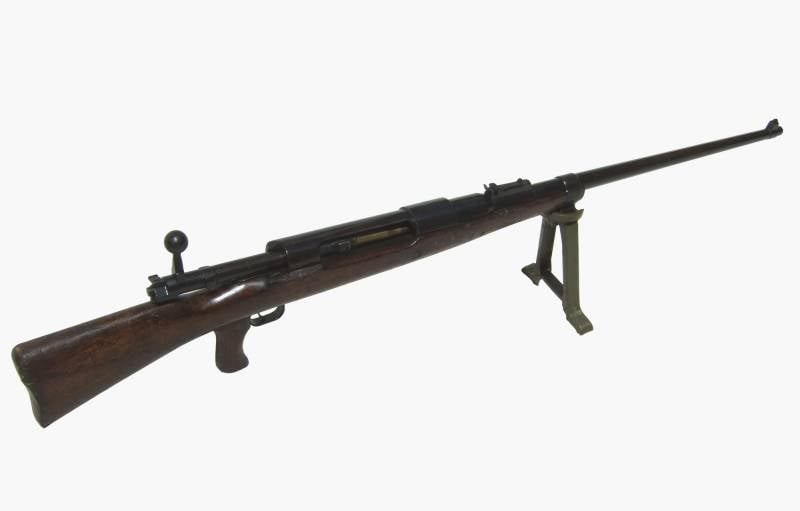
PTR T-Gewehr early release with bipod from MG 08/15, the shutter is open. Photo Sassik.livejournal.com
In September 1916, Great Britain first applied to the battlefield. Tanks, and soon this technique became a regular participant in the battles. The German army immediately began to look for ways to deal with tanks, including create anti-tank weapons suitable for use by infantry. The most notable result of such searches was the appearance of the Tankgewehr M1918 anti-tank rifle from Mauser.
Problems and solutions
By 1916, the German army was already armed with an armor-piercing rifle cartridge of 7,92x57 mm with a Spitzgeschoss mit Kern (SmK) type bullet. The parameters of such ammunition were sufficient to defeat the early British tanks, and regular army rifles turned into anti-tank rifles. In addition, the SmK bullet was quite effective in anti-aircraft fire.
However, after a few months more advanced tanks appeared with enhanced armor. The survivability of aircraft also grew steadily. The SmK bullet lost its effectiveness and required replacement. The army needed new means to combat armored vehicles and aviation.
In October 1917, the Gewehr-Prüfungskommission (GPK) commission launched a program for the development of a new rifle complex. To deal with tanks and aircraft, it was necessary to create a heavy machine gun and a cartridge for it. Subsequently such weapon called MG 18 Tank und Flieger.
However, the development of the rifle complex could take a lot of time, and new weapons were required as soon as possible. In this regard, there was a proposal to create a special anti-tank rifle of the simplest design possible, which could be put into production as soon as possible. Despite obvious limitations, even such a temporary solution allowed us to obtain positive results.
In November 1917, Mauser received an order to create a promising PTR. To accelerate work in the conditions of a lack of resources, the project was given a high priority - the same as the production of submarines. Thanks to this, in January 1918 the first prototype was manufactured, and in May they launched mass production.
The new model was adopted as the Mauser Tankgewehr M1918. Also abbreviated as T-Gewehr.
New cartridge
As the basis of the program, a new cartridge with high penetration characteristics was considered. In the early stages of its project, the Mauser studied several similar structures with a bullet of 13 to 15 mm caliber and various characteristics.
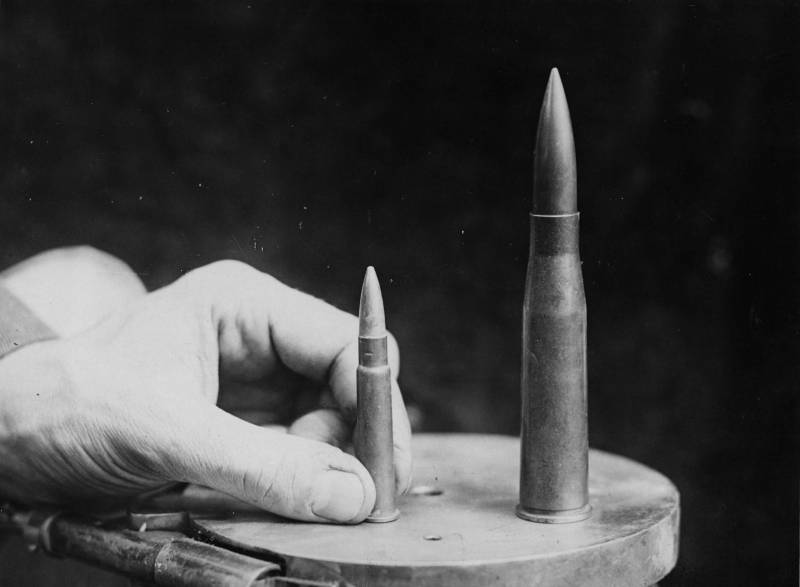
Britain is studying trophies: a .303 British rifle cartridge (left) compared to the German 13.2 mm TuF. Wikimedia Commons Photos
The solution was found thanks to the Polte cartridge plant from Magdeburg. He has already created an experimental cartridge with an armor-piercing bullet of 13,2 mm caliber and a 92-mm sleeve with a partially protruding flange. The finished cartridge was adopted under the designation 13.2 mm Tank und Flieger (TuF).
The cartridge was equipped with a 13,2 mm bullet with a hardened steel core. It was possible to obtain an initial speed of 780 m / s at an energy of 15,9 kJ. At a distance of 100 m this allowed to penetrate 20 mm of homogeneous armor (angle 0 °); 300 m penetration decreased to 15 mm.
Scale rifle
To speed up the development, they decided to make the new T-Gewehr based on the design of the serial Gewehr 98 rifle, supplemented by some elements from the Gewehr 88. This allowed us to do without a long and complicated search for technical solutions to obtain the desired result. However, the original design still had to be scaled for a new cartridge, refined taking into account different energy and improved ergonomics.
T-Gewehr was a single-shot large-caliber rifle with a sliding bolt. The barrel with a reinforced receiver and the simplest trigger was fixed on a wooden bed. The store was absent; it was proposed to supply cartridges through a window for ejecting cartridges.
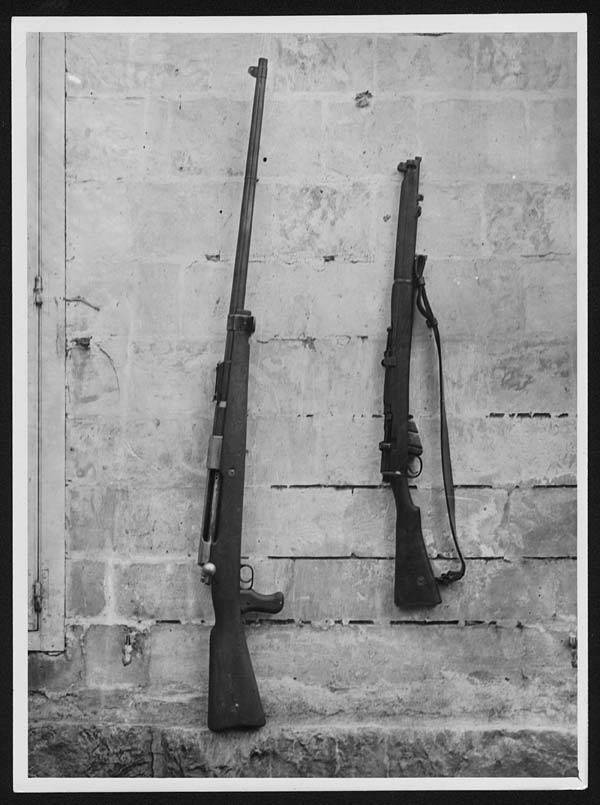
German PTR and British SMLE rifle. Photo Tanks-encyclopedia.com
Experienced rifles and the first 300 serial received a rifled barrel with a length of 861 mm (65 klb) with relatively thick walls. Later, thinner trunks with a length of 960 mm (73 klb) were produced. They allowed to reduce the total mass of the rifle, as well as slightly improve combat qualities.
PTR received a shutter made on the basis of the decisions of the Gew.88 and Gew.98 projects. Its main part was distinguished by its large size and corresponding mass. Locking was carried out by two pairs of combat stops in the front and rear parts of the bolt. As before, in the back there was a fuse flag that blocked the movement of the drummer. In the event of a breakthrough of gases from the liner, three holes were provided in the bolt — through them, gases from the projectile channel were discharged to the outside.
The first 300 rifles retained the full-time sight from Gew.98, marked up to 2000 m. Next, a new open sight was used with markings from 100 to 500 m. Effective shooting at tanks with 500 meters or more was excluded. Moreover, most modern enemy armored vehicles could be hit with only 300 m.
A small part of the rifles received a solid wooden box. Most were equipped with glued stocks with attached bottom of the butt. The reinforced box had a neck too thick, which is why a pistol grip appeared under it.
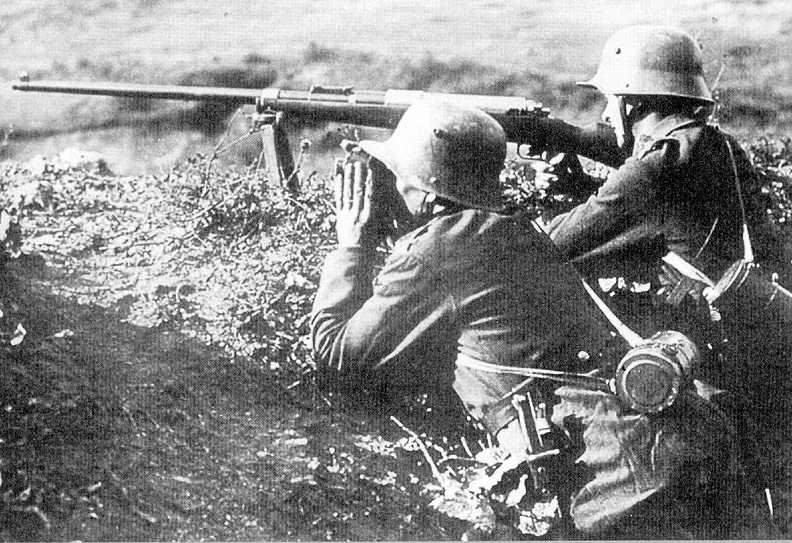
Calculation of Tankgewehr on a position. Photo Armedconflicts.com
The PTR of the first issues was equipped with a biped bipod from the MG 08/15 machine gun. It was not too comfortable and later gave way to a new one, designed specifically for T-Gewehr. The standard mount for the bipod on the bed made it possible to put the rifle on all installations compatible with a light machine gun. The troops often improvised and put the PTR at other bases, including trophy.
Depending on the barrel, the M1918 PTR had a length of not more than 1680 mm. Late rifles with a long barrel without a cartridge and a bipod weighed 15,7 kg.
Rifles in the service
Already in the early summer of 1918, the first serial PTR of the new model went to units on the Western Front, where the Entente actively used tanks. Serial production was launched at the Neckar factory in Obendorf. Quite quickly, the enterprise reached the highest production rates. 300 PTRs were produced daily. Until the end of the war produced approx. 16 thousand of such products.
The weapons were transferred to infantry regiments, where special rifle divisions were formed. Each regiment was supposed to only 2-3 PTR, however, the proposed tactics of use made it possible to realize the potential of weapons even with a small number.
The calculation of the rifle consisted of two people - the shooter and assistant. Due to the specifics of the combat work, the PTRs were trusted by the most brave fighters who were able to let the tank 250-300 m away and shoot it in cold blood. Wearable ammunition included 132 rounds of 13.2 mm TuF. The arrow relied on a bag of 20 rounds, the rest carried the second number.
The main tactic of using T-Gewehr was to focus on tank hazardous areas. The shooters were to fire on approaching tanks, trying to damage vital units or injure the crew. In this they were helped by fighters with regular SmK rifles and bullets.
13,2 mm bullets could penetrate the tank’s armor and cause damage to units or people. Cracking of the armor and the destruction of rivets were also observed, giving a stream of fragments without direct penetration. The simultaneous use of anti-tank rifles and rifles increased the chances of incapacitating the tank.
It should be noted that the PTR from the Mauser did not differ in convenience and ease of operation, which affected the combat use. The rifle had no means of reducing recoil. To avoid injuries, the shooters had to change after several shots. However, in this case, there were headaches, temporary hearing loss and even dislocations. It was Tankgewehr that caused the jokes about weapons, from which you can shoot only twice - according to the number of healthy shoulders.
In general, the Mauser Tankgewehr M1918 anti-tank rifle has established itself as a fairly effective, but difficult to use weapon. It significantly strengthened the defense of the German troops and caused damage to the enemy. The exact losses of the Entente from PTR fire are unknown. However, they were sufficient to stimulate the development of armored vehicles and crew protection equipment.
After the war
The period of active use of P-T-Gewehr PTR lasted only a few months - until the ceasefire. During this time, part of the issued rifles was lost or decommissioned, but the army had at its disposal significant stockpiles of weapons. Soon, the Treaty of Versailles determined their future fate.
Under the terms of the peace treaty, Germany was prohibited from arming anti-tank rifles. The accumulated stocks of M1918 products were seized as reparations and shared between several countries. Part of the rifles soon hit the secondary market. So, Belgium received several thousand PTRs, and then sold a significant part of them to China.
German PTRs dispersed to many countries and underwent careful study. Attempts were made to copy and refine the existing design - with different results and successes. Their main result was an understanding of the fundamental possibility of creating a relatively light anti-tank system for infantry. Soon, this concept was developed, as a result of which new variants of anti-tank rifles appeared.
It is worth recalling that the Mauser Tankgewehr PTR was developed as a temporary measure in anticipation of a heavy machine gun. The latter was able to create and even released an extremely small series, but it was the "temporary" rifle that was widely used. Moreover, it became the first model of a new class and led to the emergence of a mass of new weapons of a similar purpose.
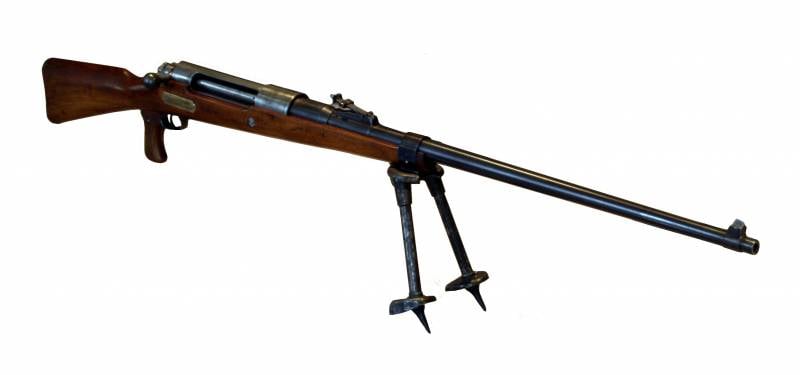
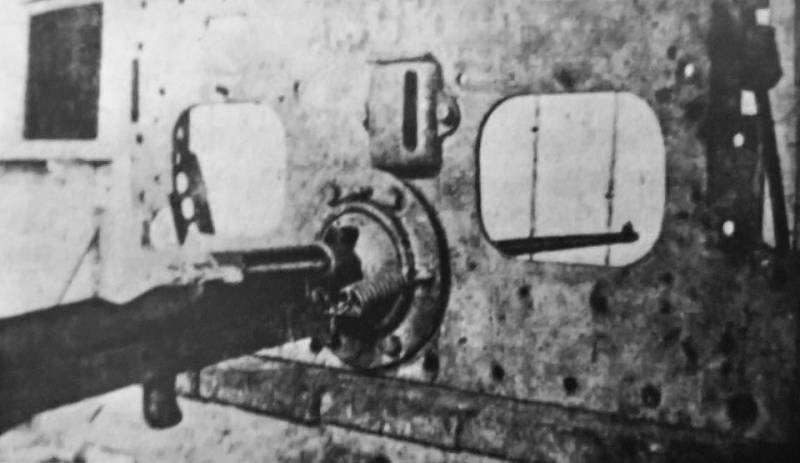
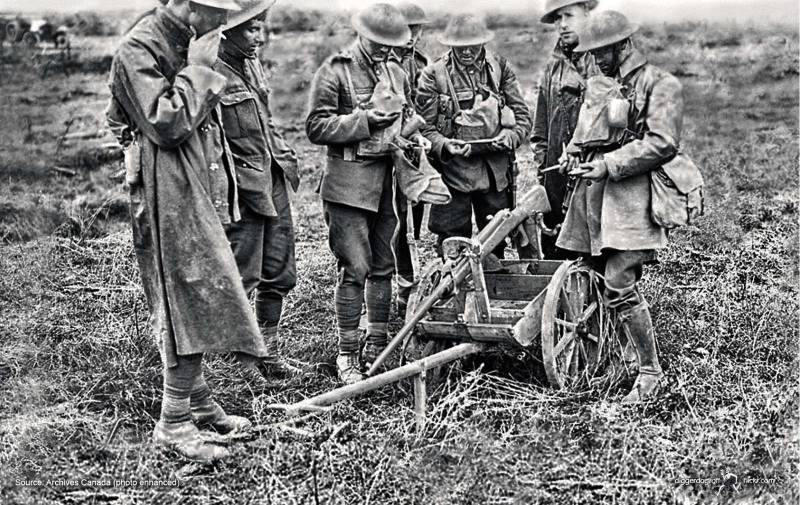
Information